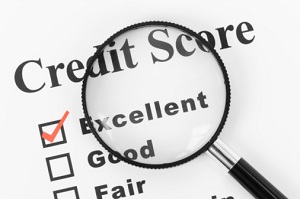.jpg) The first step in understanding your credit score after bankruptcy is to understand how your credit score is calculated. Credit scores are not as complicated as some of us assume. Credit reporting agencies combine information from your credit history with your current financial condition to calculate your credit score. Credit scores are a very important element of your financial well-being as they are used to determine whether you are eligible to receive credit and the interest rate that will be applied to credit that you receive. However, credit scores can now affect several other areas of your financial life including rental applications, insurance rates and cell phone contracts.
The first step in understanding your credit score after bankruptcy is to understand how your credit score is calculated. Credit scores are not as complicated as some of us assume. Credit reporting agencies combine information from your credit history with your current financial condition to calculate your credit score. Credit scores are a very important element of your financial well-being as they are used to determine whether you are eligible to receive credit and the interest rate that will be applied to credit that you receive. However, credit scores can now affect several other areas of your financial life including rental applications, insurance rates and cell phone contracts.
Calculating Your Credit Score
Your credit score is calculated using both positive and negative information from your credit reports. There are five categories of information used to calculate your credit score: payment history, amounts owed, length of credit history, types of credit used and new credit.
Payment History
Your payment history is one of the most important factors of your credit score. It accounts for 35% of your score. Information used to determine your overall payment history includes how much was owed, how recent was your last late payment and how many late payments you made. While a few late payments may not completely hurt your credit score, making payments late is one of the quickest ways to lower your credit score. Your payment history also includes bankruptcies, foreclosures, lawsuits, collections, liens and judgments.
Amounts Owed
The amount you owe on various accounts is used to determine 30% of your credit score. This element is based on the amount owed on all accounts, whether you have a balance on certain types of accounts, how many accounts have an open balance, how much of the total credit line is used on revolving accounts and how much you still owe on installment loans. Owing money does not necessarily mean you are a high-risk borrower; however, maxing out all accounts can result in a lower credit score.
Length of Credit History
How long you have used credit accounts for 15% of your credit score. Lenders like to see borrowers who have a longer credit history; however, you may still have a high credit score even though you are a relatively new borrower based on the other information on your credit report. The age of your oldest account, the age of your newest account, average age of all accounts and how long it has been since you used certain types of accounts are factors in your length of credit history score.
Types of Credit
This accounts for 10% of your credit score. If you have a mix of retail accounts, installment loans, finance company loans, mortgage loans and credit cards, your score will be higher than someone with only one or two types of accounts. Of course, you must manage those accounts wisely in order to have a higher credit score.
New Credit
The amount and type of new credit that you obtain accounts for 10% of your overall credit score. This does not mean that you cannot apply for new credit; however, if you apply for multiple accounts within a short time, it can lower your credit score.
Your Credit Score After Bankruptcy
Your credit score after bankruptcy will always be lower than the score prior to filing because bankruptcy is a negative event on your credit report. However, many debtors are surprised to see an increase in their credit score within a year after filing bankruptcy. Your credit score after bankruptcy is calculated the same way that it is before you filed bankruptcy. In many cases, filing bankruptcy improves your credit score given a modest amount of time.
For example, the amount of debt you owe is a major factor in your credit score. Bankruptcy discharges unsecured debt thereby lowering the amount of debt that you owe. This can work in your favor. Furthermore, bankruptcy typically discharges the debts that are showing as collections, liens and judgments on your credit report. These negative items will now show as discharged in bankruptcy. This can also work in your favor for calculating your credit score after bankruptcy.
Tips for Improving Your Credit Score After Bankruptcy
Improving your credit score after bankruptcy takes much the same path as improving your credit score without a bankruptcy filing. Below are some helpful tips for improving credit scores after bankruptcy.
Make all payments on time
Payment history is the largest component of your credit score. Making all future payments on time is very important if you want to improve your credit score.
Keep revolving credit balances low
Your outstanding balances on credit cards should not exceed 30% of your credit limit. The amount owed on open accounts is the second largest element of your credit score.
Do not close old accounts
If a creditor did not close an old account that had a zero balance at the time of the bankruptcy filing, do not close this account. Charge a small amount on the account and pay it off. Continuing to use an old account will help improve your credit score by giving you a longer credit history.
Apply for a secured credit card
A secured credit card requires a deposit equal to the credit limit for the account but works as a normal credit card. Make sure that the company will report your on-time payments to the credit reporting agencies.
Apply for an installment loan
Within a year of filing, you will probably qualify for an installment loan. The interest rate may be a little high; however, the on-time payments and the type of debt will help improve your credit score after bankruptcy.
Being able to positively influence your credit score is just one of the benefits of bankruptcy. For more information about how bankruptcy can improve your life, sign up for our free monthly eNewsletter.



